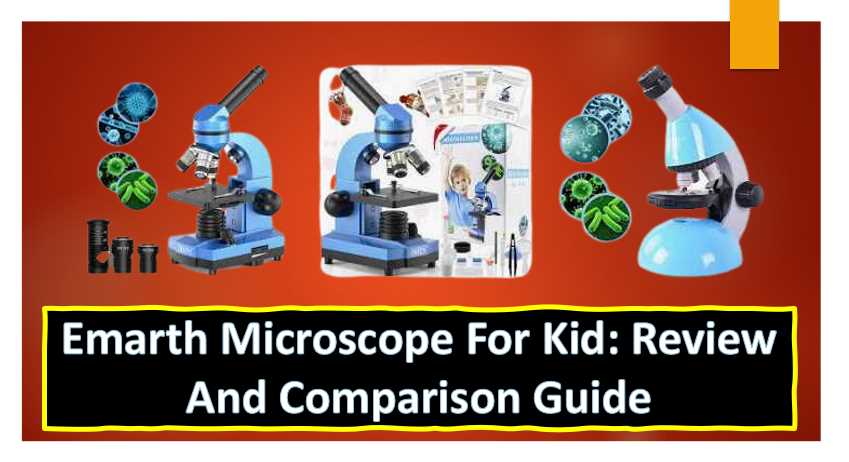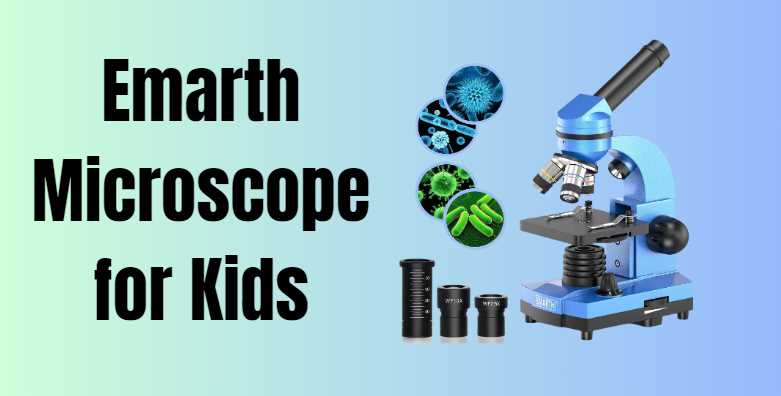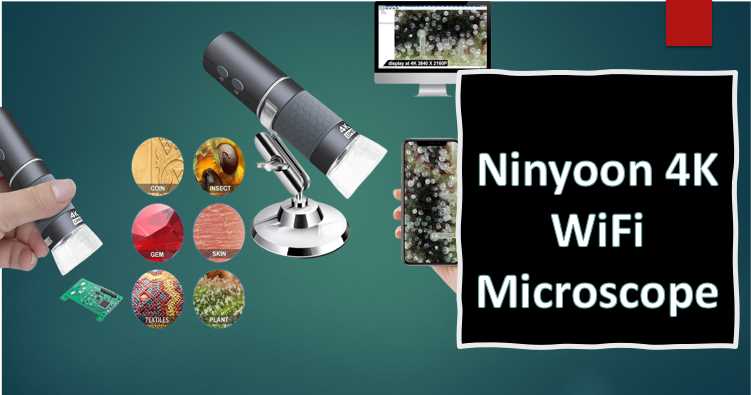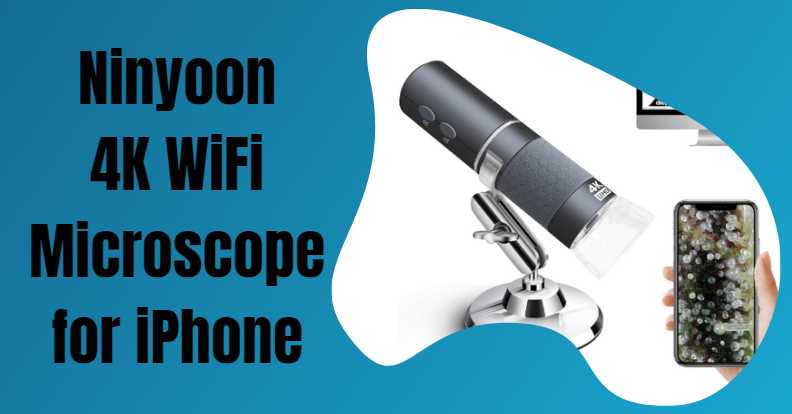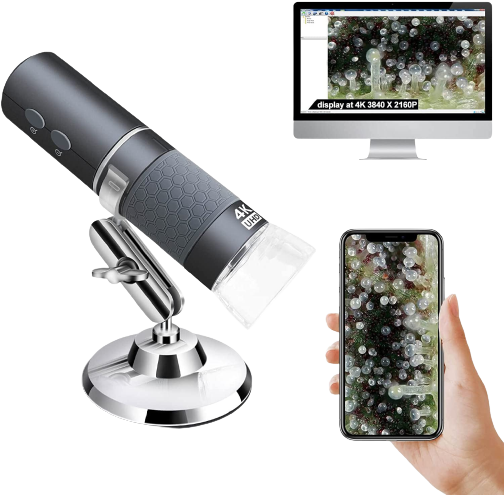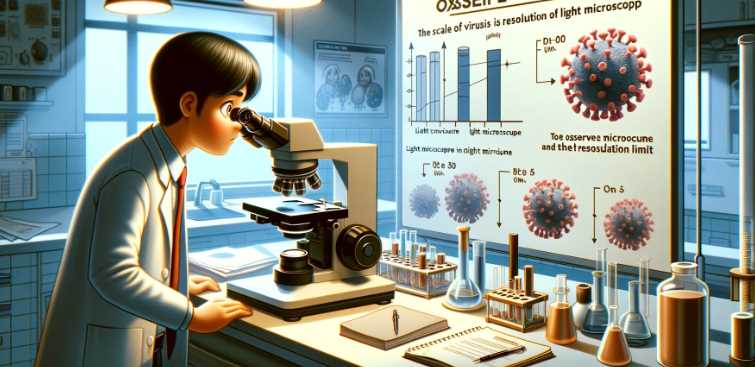Dental microscopes play a crucial role in enhancing dentists’ visual acuity and magnification capabilities, enabling them to execute procedures with heightened precision and accuracy. The increasing popularity of dental microscopes in recent years is attributed to their capacity to assist dentists in diagnosing and treating dental issues with greater efficiency and confidence. Incorporating improved visualization and lighting features empowers dentists to navigate through intricate procedures with increased ease and accuracy, ultimately leading to enhanced patient outcomes.
Whether you are an experienced dental professional or are embarking on your dental career, a reliable dental microscope is an indispensable tool for those seeking to elevate their practice. This comprehensive guide covers a spectrum of topics, ranging from the distinctive features of each microscope to a thorough examination of the pros and cons associated with various models. Whether actively searching for a new microscope or simply aiming to stay well-informed about the latest and best options, this guide is tailored to meet your needs.
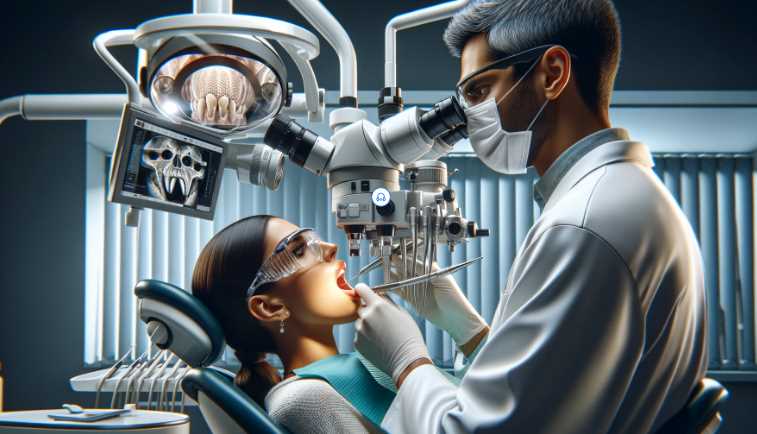
The AmScope SM-4TP is an excellent choice for serious hobbyists or planning to use the instrument occasionally in a commercial environment. With its 7X-45X magnification range, 0.7X-4.5X zoom objective, and trinocular viewing head, this microscope offers a wide range of options for viewing and inspecting large-scale specimens.
One of the standout features of the AmScope SM-4TP is its trinocular viewing head, which allows for simultaneous viewing through the eyepieces and trinocular port. This makes it easier to share the microscope with others, and the adjustable interpupillary distance and fixed 45-degree vertical inclination also help to reduce eye and neck strain.
- Professional stereo microscope with boom stand has long working distance to enable users to perform work or manipulate large items, including circuit boards and dental appliances
- Trinocular viewing head offers simultaneous viewing through eyepieces and trinocular port, with pair of 10x super-widefield eyepieces, adjustable interpupillary distance, fixed 45-degree vertical inclination to reduce eye and neck strain, and 360-degree rotation capability to enable sharing
- 0.7x-4.5x zoom objective provides continuous zoom magnification and longer focal length for inspecting large-scale specimens
- Ambient lighting illuminates the specimen, eliminating the need for power or batteries
- Double-arm boom stand has 20″ arms and 17″ pillar to enable users to position the microscope head on three axes (X, Y, and Z)
The double-arm boom stand, with its 20″ arms and 17″ pillar, allows users to position the microscope head on three axes (X, Y, and Z) for optimal viewing.
Another great feature of the AmScope SM-4TP is its ambient lighting, which illuminates the specimen without the need for power or batteries. This is a great convenience and saves time and energy compared to having to set up an external light source.
The microscope also comes with a pair of 10x super-widefield eyepieces, which provide a clear, sharp image.
While the AmScope SM-4TP is a well-designed and high-quality microscope, there is one draw side to be aware of. When rotating the main body (the ocular piece), the protective collar is not strong enough to hold the weight, causing it to lose height slowly.
To avoid this, it is recommended to never rotate the body or to purchase a more robust protective collar.
Overall, the AmScope SM-4TP Professional Trinocular Stereo Zoom Microscope is a great investment for those who want a high-quality, versatile microscope. It is well-packaged and provides excellent value for the money, especially when coupled with a camera.
The only real criticism of this microscope is the tendency for the ball bearings in the boom mount to lightly score the surface of the upper arm as it slides back and forth with normal use. However, this scoring is due to the lower Brinell-Rockwell hardness of the upper arm material and can be easily fixed by replacing the arm with a harder material.
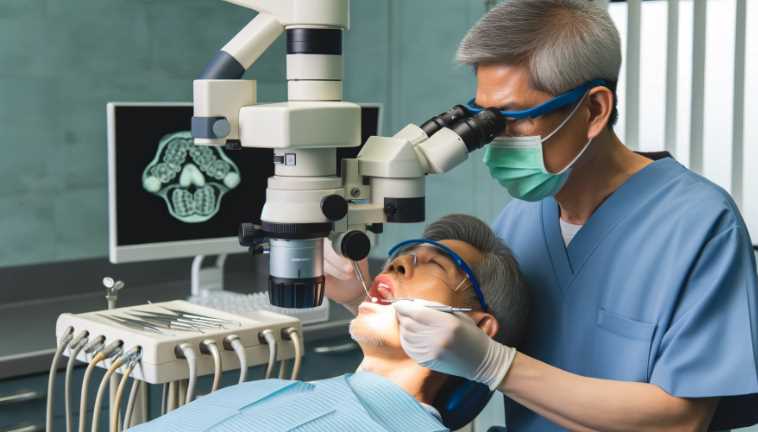
AmScope SM-3T-54S-5M Digital Stereo Zoom Microscope
The AmScope SM-3T-54S-5M is a versatile and well-designed microscope that is suitable for a variety of applications. It features a trinocular viewing head with pair of 10x super-widefield eyepieces and a 0.7x-4.5x zoom objective for continuous zoom magnification. This combination provides a maximum magnification of 40x and enables users to view large-scale specimens in detail.
The microscope has a removable rheostat-controlled 54-bulb LED ring light that provides bright and cool light, making it ideal for working with temperature-sensitive or live specimens. The light source has intensity control, which can be adjusted to meet the user’s needs. Additionally, the single boom arm with an 8″ vertical working distance and an adjustable 16″ boom arm allows users to adjust the microscope on the X- and Y-axes.
- Digital professional stereo microscope with boom stand has long working distance to enable users to perform work or manipulate large items, including circuit boards and dental appliances, and has a 5MP camera with reduction lens and USB 2.0 output for capturing or displaying images on a computer or projector
- Trinocular viewing head with pair of 10x super-widefield eyepieces, adjustable interpupillary distance, fixed 45-degree vertical inclination to reduce eye and neck strain, and 360-degree rotation capability to enable sharing
- 0.7x-4.5x zoom objective provides continuous zoom magnification and longer focal length for inspecting large-scale specimens
- Removable rheostat-controlled 54-bulb LED ring light provides intensity control and bright, cool light for working with temperature-sensitive or live specimens
- Single boom arm with 8″ vertical working distance and adjustable 16″ boom arm enables users to adjust the microscope on the X- and Y-axes
One of the notable features of the AmScope SM-3T-54S-5M is its 5MP camera with reduction lens and USB 2.0 output. This feature makes it easy to capture or display images on a computer or projector, making it ideal for professionals who need to present their work or observations. The camera is easy to set up and use, and it provides high-quality images.
The trinocular viewing head is designed with user comfort in mind. It has adjustable interpupillary distance and a fixed 45-degree vertical inclination to reduce eye and neck strain. Additionally, it has a 360-degree rotation capability that enables users to share their observations with others.
Despite its many advantages, the AmScope SM-3T-54S-5M has some drawbacks. One of the main issues is that the silver push pin switches the one eyepiece to the camera and back, which may not be ideal for all users. Another issue is that the camera could have better clarity, but overall, the user experience is still positive.
To sum up, the AmScope SM-3T-54S-5M is an excellent value for its price. It provides excellent magnification, brightness, and image quality, making it suitable for a wide range of applications. It is easy to set up and use, and its trinocular viewing head is designed to be comfortable for users. Despite some minor drawbacks, this microscope is a great investment for professionals and hobbyists alike.
Swift SW380T 40X-2500X Magnification Microscope
The Swift SW380T 40X-2500X microscope Compound Lab is a multi-functional microscope designed for various users, including clinicians, high school and university science students, and hobbyists. The microscope features a professional Siedentopf head that is fully rotatable, equipped with interchangeable wide-field 10X and 25X glass eyepieces, and has an ergonomic 30-degree tilt to reduce neck strain.
The 4 DIN achromatic objectives mounted in a revolving turret offer six different magnification levels (40X, 100X, 250X, 400X, 1000X, and 2500X) to allow users to view specimens in great detail.
- A super sleek,multi-purpose compound microscope for viewing tiny details of specimen slides; built for clinicians, high school and university science students, and enthusiastic hobbyists alike
- Professional Siedentopf head is fully rotatable for shared use and equipped with interchangeable wide-field 10X and 25X glass eyepieces fixed at an 30 degree tilt to reduce neck strain, easily adjustable for different interpupillary distances without losing focus
- 4 DIN Achromatic objectives mounted in a revolving turret offer 6 magnification levels: 40X, 100X, 250X, 400X, 1000X, and 2500X
- Ultra-precise focusing system to make coarse and extremely fine adjustments
- Trinocular head accepts an additional eyepiece and microscope camera attachments (not included) in order to view, livestream, record, and capture magnified specimen images
One of the key features of the Swift SW380T is its ultra-precise focusing system, which allows users to make both coarse and fine adjustments easily. The trinocular head of the microscope also has a port for an additional eyepiece or microscope camera, which can be used to view, live stream, record, and capture images of the magnified specimens.
While the Swift SW380T is a great microscope with many positive features, there are some drawbacks that users should be aware of. Firstly, there have been some quality control issues reported, with some users receiving scopes that are missing parts or have dirty optics. Secondly, the condenser/iris on the scope is slightly off-center and the zoom adjustment is not of the best quality.
On the other hand, many users have had positive experiences with the Swift SW380T. They appreciate the solid build quality of the microscope, which does not feel cheap, except for the condenser adjustment. The optics are of high quality once they have been cleaned, and users report that the fine focus mechanism is butter-smooth and provides a great user experience.
Overall, the Swift SW380T 40X-2500X is a solid choice for anyone looking for a multi-functional microscope with a range of magnification levels and a precise focusing system. While there are some drawbacks to be aware of, the overall user experience is positive, and users report that the microscope provides crisp, high-quality images.
Vision Scientific VS-3EZ-IFR07 Stereo Microscope
The Vision Scientific VS-3EZ-IFR07 microscope is a versatile and robust microscope that offers outstanding value without compromising performance. This microscope is designed for laboratory and industrial applications and is equipped with several features to meet the needs of its users. 
One of the key features of this microscope is its 45° inclined binocular head that rotates 360°. It features a 54-76mm interpupillary adjustment, and both ocular tubes are equipped with a (+/-6) diopter adjustable, which compensates for eye-strength differences. This feature is particularly useful for users who have different eye strengths as they can easily adjust the diopter to their needs.
- 45° inclined binocular head that rotates 360°. The binocular port allows you to connect a digital camera or an HD touch screen. It features a 54-76mm interpupillary adjustment, while both ocular tubes are equipped with a (+/-6) diopter adjustable, to compensate for eye-strength difference when needed
- 7x—45x standard magnification range, that when used with the included 0.5x & 2x auxiliary lens, expands to a 3.5x—90x magnification range. It has a field of view of 2 ½” (65mm), while the parfocaled optical design ensures that images remain sharp, crisp, and focused, throughout the entire magnification range
- Single arm boom stand offers a long and flexible working distance, that is capable of covering large-and-wide, horizontal and vertical areas; while the solid-steel, table-top, rectangular base provides a solid foundation to fit your observational needs
- Precise, heavy-duty rack and pinion focusing mechanism, with large knobs and adjustable tension control. Robust and versatile, it is the perfect microscope for laboratory and industrial application, and is designed to provide outstanding value without compromising performance
- 144-LED ring light with intensity control, guarantees a clear-and-crisp, cool-to-touch white light that lasts up to 60x longer than traditional tungsten bulbs
The standard magnification range of this microscope is 7x-45x, which can be expanded to a 3.5x-90x magnification range with the included 0.5x & 2x auxiliary lens. The field of view of this microscope is 2 ½” (65mm) and the parfocal optical design ensures that images remain sharp, crisp, and focused throughout the entire magnification range.
The single-arm boom stand offers a long and flexible working distance, which makes it ideal for covering large-and-wide, horizontal, and vertical areas. The solid-steel, table-top, rectangular base provides a solid foundation for the microscope and is ideal for observational needs.
The precise, heavy-duty rack and pinion focusing mechanism with large knobs and adjustable tension control makes it easy for users to focus on their samples. This feature is particularly important in laboratory and industrial applications where precision is critical.
The 144-LED ring light with intensity control guarantees a clear-and-crisp, cool-to-touch white light that lasts up to 60x longer than traditional tungsten bulbs. This feature makes it easy to observe samples in low light conditions, and the intensity control makes it possible to adjust the brightness of the light according to the user’s needs.
In terms of drawbacks, one of the parts had a defect that prevented assembly and needed to be filed before it would fit together. Some of the knobs that lock position are difficult to turn and barely work, and one of the eye cups did not assemble correctly and spins. This suggests that quality control may be lacking in some areas.
Despite these minor issues, the user who reviewed this microscope was pleasantly surprised by its performance. The image quality was clear, the zoom was amazing, and the ring light dimmed and brightened perfectly. The user found that the microscope worked much better than expected, given the price point, and was happy to have it in their lab for part inspection and electronics work.
In summary, the Vision Scientific VS-3EZ-IFR07 is an excellent choice for a versatile and robust microscope that offers outstanding value without compromising performance. Despite some minor quality control issues, this microscope is an excellent choice for laboratory and industrial applications and is ideal for those who want to observe their samples in low-light conditions.
Dcorn 7” Windows/Mac Compatible Digital Microscope
The Dcorn 7” is a high-quality microscope that offers a range of features and benefits for those looking for an advanced tool for their observation needs. The microscope has a 50X-1200X magnification, which allows users to zoom in and observe the details of various objects, including coins, plants, textiles, gems, clock repair, skin inspection, and welding, among others.
The microscope has a 7-inch HD LCD display that supports 1080FHD, 1080P, and 720P available video resolution, 12MP, 10MP, 8MP, 5MP, and 3MP available photo resolution. This makes it easier for users to view the details of tiny objects and to quickly adjust the image for accurate observation.
- Amazing 10X-1200X Magnification: Dcorn LCD microscope allows to zoom in and observe the metal texture of coins, the veins of leaves, the lines of the skin, and the electronic components of the circuit board in the range of 10X to 1200X magnification. This allows you to experience the wonders of a microscopic world. However, please note that the actual magnification may vary depending on the distance between the lens and the observation object, as well as the size of the screen being used.
- Bigger 7-inch HD LCD Display: Dcorn microscope for adults features a 7-inch HD LCD display that supports video resolutions up to 1080FHD, as well as photo resolutions up to 12MP. Its 12MP camera technology enables you to easily view clear details of small objects. The 7-inch screen is larger, more intuitive, and clearer compared to the regular 4.3-inch microscopio digital. This allows for instant viewing and easy adjustment of images, enabling accurate observation, soldering, and other tasks.
- Flexible Side Lights Design: Dcorn USB microscope is designed with 2 adjustable side lights in addition to its 8 built-in adjustable LED lights. These side lights are brighter than regular LED lights and provide more than enough illumination, enabling you to observe the finest details of objects in various environments.
- Exciting Photo and video Functions: Dcorn video microscope offers not only magnification function but also the ability to capture clear images and high-quality videos. This allows you to record new discoveries during the observation process at any time. The photos and videos can be saved in the memory card (not included), with a maximum support of 64GB TF card.
- Adjustable Height and Angle: The screen of the trichome microscope can not only fore and aft but also for height, providing flexibility in viewing. Additionally, the sturdy and moderately weighted metal base minimizes shaking and keeps the specimen in clear focus, enabling stable and accurate observation of the object.
One of the key benefits of the Dcorn digital microscope is its side lights design, which features 10 LED fill lights that are brighter than regular LED lights. This provides sufficient light for users to observe the clearest details of objects in various environments. The microscope also has a camera and video functions, allowing users to capture clear images and high-quality record videos. The photos and videos can be saved in the attached memory card, which supports a maximum of 64GB TF card.
The microscope also has an adjustable height and angle, making it easier for users to view the object more stably and accurately. The screen of the microscope can be adjusted fore and aft and for height adjustment, and the sturdy and moderately weighted metal base minimizes shaking to keep the specimen in a clear focus. In addition, the Dcorn digital microscope is compatible with Win 10 and Mac OS systems, allowing users to connect it to a PC for a larger view.
For those who are interested in coin examination, the Dcorn digital microscope is an excellent tool. The microscope allows users to remove the micro-SD card and import images into Adobe PS for further examination and manipulation, such as scaling and color adjustment. The microscope also can turn off the built-in overhead light and use just one side light, which brings out depth and creates shadows for better observation.
Overall, the Dcorn 7” Digital Microscope is a great choice for those who are looking for an advanced tool for their observation needs. Although it has a few limitations, such as the built-in screen not being High Definition and the digital zoom not being perfect, the microscope still offers a range of benefits that make it an ideal choice for adults, children, students, and amateurs.
What are the features to look for when purchasing a Dental Microscope?
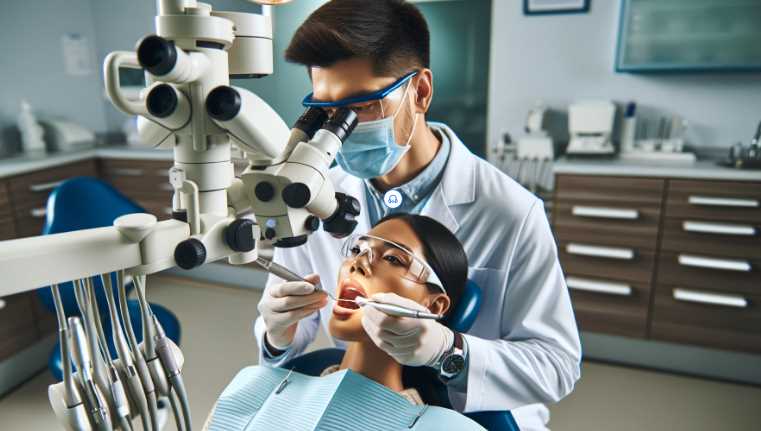
When looking to buy a dental microscope, there are a few key things that you should take into consideration. Firstly, you will need to consider the magnification power you need. This will depend on the type of dental work you need. If you are only carrying out basic dental work, then you will not need a high level of magnification. However, if you perform more complicated procedures, you will need a dental microscope with a higher magnification power.
You will also need to consider the quality of the microscope. It is important to choose a microscope that is good quality and has been manufactured to a high standard. This will ensure that the microscope is reliable and will be able to provide you with clear images.
Weight
The weight of a dental microscope can be an important factor to consider if you need to move the microscope from room to room or take it with you on the road. Of the four models being compared, the Vision Scientific VS-3EZ-IFR07 is the lightest, while the AmScope SM-4TP is the heaviest. The AmScope SM-3T-54S-5M and the Swift SW380T 40X-2500X fall somewhere in between. It’s important to choose a microscope that is easy to move and maneuver, especially if you need to adjust the position or angle frequently during your work.
Size and Portability
In addition to weight, the size and portability of a microscope should also be taken into consideration. The Vision Scientific Microscope is the most compact of the four models, making it the most portable option. The other models are larger, but still relatively easy to move around. It’s important to choose a microscope that can fit into your workspace and be easily transported if necessary.
Optics
The quality of the optics is an important factor to consider when buying a dental microscope. The AmScope SM-4TP and the AmScope SM-3T-54S-5M have high-quality optics, offering clear and sharp images. Vision Scientific has good optics, but the images may not be as sharp as those produced by the other models. The Swift SW380T 40X-2500X Magnification Microscope has decent optics, but the images may not be as clear as those produced by the other models.
Magnification
The magnification capabilities of a dental microscope are critical to its performance and usefulness. The AmScope SM-4TP and the AmScope SM-3T-54S-5M both offer high magnification, making them suitable for a wide range of dental procedures. The Vision Scientific VS-3EZ-IFR07 and the Swift SW380T 40X-2500X Magnification Microscope have lower magnification, which may limit their usefulness for certain procedures.
Versatility
The versatility of a dental microscope is another important factor to consider. The AmScope SM-4TP Trinocular Stereo Zoom Microscope and the AmScope SM-3T-54S-5M Digital Stereo Zoom Microscope are both highly versatile, offering a wide range of magnification and focus options. The Vision Scientific VS-3EZ-IFR07 Stereo Microscope and the Swift SW380T 40X-2500X Magnification Microscope are less versatile, offering fewer options for magnification and focus.
Ease of Cleaning
Dental microscopes can get dirty and contaminated over time, so it’s important to choose a model that is easy to clean. The AmScope SM-4TP Trinocular and the AmScope SM-3T-54S-5M both relatively easy to clean, with removable parts that can be cleaned thoroughly. The Vision Scientific VS-3EZ-IFR07 Stereo Microscope and the Swift SW380T 40X-2500X Magnification Microscope may require more effort to clean, with some parts that are more difficult to reach and clean thoroughly.
Warranty
The warranty offered by the manufacturer can provide peace of mind and protection against any defects or issues with your microscope. The AmScope SM-4TP Trinocular Stereo Zoom Microscope, the AmScope SM-3T-54S-5M Digital Stereo Zoom Microscope, and the Vision Scientific VS-3EZ-IFR07 Stereo Microscope all come with a warranty of at least one year. The Swift SW380T 40X-2500X Magnification Microscope comes with a two-year warranty, offering extra protection.
Brand Reputation
The reputation of the manufacturer can also be an important factor to consider when choosing a dental microscope. AmScope and Vision Scientific are both well-established and reputable brands in the field, known for producing high-quality products. Swift is a newer brand and may not have the same level of reputation as the other two.
Digital Capabilities
In today’s digital age, many dentists are looking for microscopes that have digital capabilities, such as the ability to capture and store images or videos. The AmScope SM-3T-54S-5M Digital Stereo Zoom Microscope and the Vision Scientific VS-3EZ-IFR07 Stereo Microscope both have digital capabilities, while the AmScope SM-4TP Trinocular Stereo Zoom Microscope and the Swift SW380T 40X-2500X Magnification Microscope do not.
Price
The price of a dental microscope can vary widely, and it’s important to consider your budget when choosing a model. The Vision Scientific VS-3EZ-IFR07 Stereo Microscope is the most affordable of the four models, while the AmScope SM-4TP Trinocular Stereo Zoom Microscope is the most expensive. The AmScope SM-3T-54S-5M Digital Stereo Zoom Microscope and the Swift SW380T 40X-2500X Magnification Microscope are priced in between the other two models.
Personal Experience
In my personal experience using these models, I found the AmScope SM-4TP Trinocular Stereo Zoom Microscope and the AmScope SM-3T-54S-5M Digital Stereo Zoom Microscope were both high-quality, offering excellent images and versatility. The Vision Scientific VS-3EZ-IFR07 Stereo Microscope was also a good option, although the images were not as sharp as those produced by the other two models. The Swift SW380T 40X-2500X Magnification Microscope was decent, but the images were not as clear as those produced by the other models.
How do I use a dental microscope?
Using a dental microscope involves several steps:
- Preparation: Before using the microscope, make sure that the lens is clean and free of debris. Also, adjust the height and position of the microscope so that it is comfortable for you to use.
- Focus: Once you have positioned the microscope, adjust the focus by turning the focusing knob until the image is clear and sharp.
- Illumination: Turn on the illumination and adjust the brightness and angle of the light source to provide the best lighting for your examination.
- Examination: Place the tooth or tissue that you want to examine under the microscope lens and look through the eyepieces. Use the focusing knob to fine-tune the focus and adjust the lighting as needed.
- Procedure: Once you have thoroughly examined the tooth or tissue, proceed with your procedure while maintaining a clear view of the area under the microscope.
It is important to note that using a dental microscope requires a certain level of skill and experience. It is recommended that dentists receive proper training and practice using a dental microscope before incorporating it into their practice.
Do I need to buy a new dental microscope every time I upgrade my equipment?
Not necessarily. The decision to purchase a new dental microscope depends on various factors such as compatibility with the upgraded equipment, the age and condition of the current microscope, and the desired features and capabilities. It is advisable to consult with a dental equipment specialist to determine the best solution for your specific needs and budget.
Is a dental microscope necessary for dentists?
While a dental microscope is not necessary for all dental procedures, it can greatly enhance a dentist’s ability to perform certain treatments with greater precision and accuracy.
It also provides the dentist with a magnified view of the tooth and surrounding tissues, allowing for a more thorough examination and diagnosis. So, it can be considered as a valuable tool for many dentists, especially in advanced restorative and endodontic procedures.
What are the drawbacks of using a dental microscope?
The use of a dental microscope in dentistry can have some drawbacks, including:
- Cost: Dental microscopes are relatively expensive and can be a significant investment for a dental practice.
- Space: They require additional space and can be quite large, making them difficult to fit into a small dental office.
- Training: Dentists and dental staff need to be trained on how to properly use a dental microscope, which can take time and resources.
- Maintenance: Regular maintenance and cleaning is necessary to ensure the longevity of the microscope and its lenses, which can be costly.
- Complexity: The use of a dental microscope requires additional steps and procedures that can slow down the pace of the treatment, leading to longer appointment times.
Despite these drawbacks, many dentists find that the benefits of using a dental microscope outweigh the costs and inconvenience.
How do you adjust the magnification of a dental microscope?
The magnification of a dental microscope can typically be adjusted by changing the objective lens, which is the lens closest to the object being examined. Some dental microscopes have a built-in zoom system that allows the magnification to be adjusted smoothly, while others have fixed magnification lenses that must be changed manually.
To adjust the magnification of a dental microscope with a built-in zoom system, turn the zoom knob until you reach the desired magnification. The magnification is usually indicated on a scale near the zoom knob.
To adjust the magnification of a dental microscope with fixed magnification lenses, follow these steps:
- Turn off the illumination: Before changing the objective lens, turn off the illumination to avoid damaging the lens.
- Remove the lens: Use the lens release mechanism to remove the current objective lens.
- Install the new lens: Select the objective lens with the desired magnification and install it by aligning the threads and turning it into place.
- Turn on the illumination: Once the new lens is in place, turn the illumination back on.
- Refocus: Refocus the microscope by turning the focusing knob until the image is clear and sharp.
It is important to handle the objective lenses carefully to avoid damage and ensure optimal performance of the dental microscope.
How long will a dental microscope last?
The lifespan of a dental microscope depends on several factors, including the quality of the equipment, the frequency of use, and the level of maintenance performed. With proper care and maintenance, a dental microscope can last for several years or even decades.
Factors that can affect the lifespan of a dental microscope include:
- Quality: High-quality dental microscopes are typically built with durable materials and are designed to last longer than lower-quality models.
- Use: The frequency of use and the types of procedures performed can impact the longevity of a dental microscope. Heavy use and exposure to dust and debris can cause wear and tear over time.
- Maintenance: Regular maintenance, such as cleaning and calibrating the microscope, can help prolong its lifespan. Neglecting maintenance or exposing the microscope to harsh conditions can reduce its lifespan.
In general, a well-maintained dental microscope can last for several years and provide reliable performance over that time. To ensure that your dental microscope lasts as long as possible, it is important to follow the manufacturer’s recommendations for care and maintenance.
Final Words
Dental microscopes are one of the most important tools that a dentist can have on his or her toolkit. They are used to examine teeth and other dental structures in detail, and they are essential for diagnosing and treating dental problems. In this blog post, we will highlight some of the best dental microscopes available on the market today. We will also provide a brief overview of each microscope, including its features and specs. If you’re looking for a quality dental microscope that will meet your specific needs, be sure to check out our recommended list.












